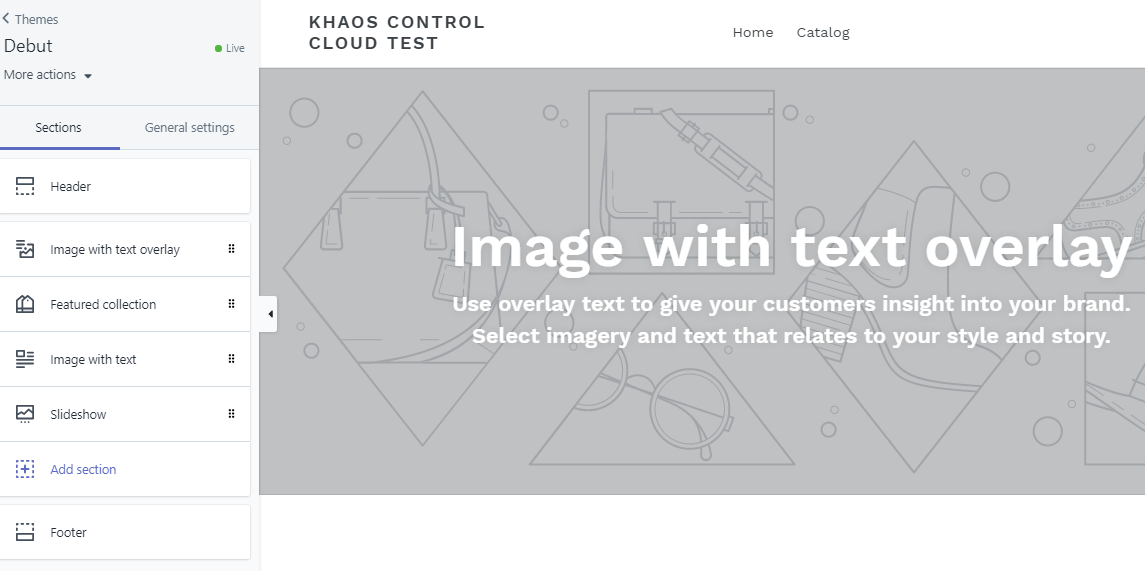Shopify allows you to build and manage a professional online shop to grow your ecommerce business without much hassle.
But the internet is full of well-designed online shops that sell great products. So. How are you going to drive buyers to YOUR shop and make them buy YOUR products instead of your competitors’?
Look no further; this blog post is here to help. Find out how to sell with Shopify like a boss!
Don’t Ignore Market Research

We know market research can be tedious and most people don’t enjoy doing it. But this does not mean you can ignore it. Before you get started on Shopify, it is vital that you know as much about your target market as possible.
Target Group
Clearly define your target group:
- Who are your potential customers?
- What are their demographics?
- Their age, gender and income?
- What is their purchasing power?
- What is important to them when they make a purchase?
- Do they value quality over price or the other way around?
- How do they make a purchase?
- Do they shop online frequently?
- Do they value fast delivery?
- Are they brand loyal or switch between brands frequently?
- How can you reach them?
- Are they active on social media?
- Do they follow influencers on social media?
- Do they engage with brands online?
- Do they use traditional media like TV, radio and newspapers?
- Do they value online reviews or recommendations from celebrities?
Can you answer all of the above questions about your target group? If not, you should invest some time in conducting market research.
For example, you can get existing data from your own records or from market research institutions and analyse it in light of your business. However, if you want more in-depth insights, you can consider conducting your own primary research. You can do that through interviews, questionnaires, or testing etc..
Of course, you need to ensure that the amount of time and money you invest in your market research is reasonable. Finding the right balance is, as so often in business, the goal.
Competition
In business, it is generally good to keep an eye on your competitors. Who are they? What products do they sell? At what prices? On which channels? How do they do marketing? How strong is their market position? What is their market share?
This does not automatically mean that you should copy what your competitors are doing. More often, setting yourself apart from them is the route to success. But you should still be aware of what is going on in the market around you. This allows you to prepare in advance and react to market changes faster. This can be of a considerable advantage as you grow your business.
Especially if you are operating in a highly saturated market and do not wish to penetrate new markets just yet, the only way to gain market share is to take it from others. Knowing your competitors is, therefore, key to developing your strategy.
Pricing

Another factor that needs a lot of consideration is pricing. If you are already an established seller, you have probably already done this. But if you are just starting out, you should be aware of the so-called ‘3 Cs’ when deciding on your prices:
- Costs: Knowing your costs (per product and overhead) is crucial to build a pricing strategy that is sustainable in the long run. A comprehensive cloud ERP accounting tool can help you with that.
- Competitors: Again, you should not try to copy your competitors. But you still need to know what they are up to. Because if they are selling the same product at a much lower price, it might be difficult for you to generate enough sales.
- Customers: The target market research highlighted earlier can also help you with your pricing. What price are your customers willing to pay for your product? How will they react to price increases or discounts?
The above factors are not exclusive, as pricing is a complex issue. But they have a considerable influence on your pricing and marketing strategy.
Of course, whole books have been written solely on market research, so there is much more to it. But this should be a good starting point and serve as a reminder that you shouldn’t just dive blindly into online selling. That might work for some but it is rarely a strategy for sustainable success.
After you have conducted your research and built your strategy, you can now get down to the nitty-gritty of online selling.
Build an Amazing Online Store With Shopify
Now is the time to let your creativity flow. And if you are not the creative type, then there’s no need to despair. Because Shopify has got you covered. You can simply use pre-designed store themes to build your store. The more creative amongst us can individualise those to a very high extend. So, you’ve got the best of both worlds!

When building your online store, there are a few things to consider that will make it a truly amazing store.
Make It YOUR Store
Your online store should fit YOUR business. This includes using a template that is suitable for the products you are selling. Shopify categorises its store themes according to industry, which can help you with that decision.
The colours, font and design should also be in line with the style of your products and, most importantly, your branding. Even if you are not a designer, with Shopify’s store builder you can still make sure to include your logo prominently and embrace your corporate branding throughout your online shop.
This does not only differentiate your store from others, but it also makes it more memorable for page visitors. And it ensures that shoppers who know your brand from other channels immediately recognise the store as yours, leading to a consistent omni-channel experience.

Overcome the Downsides of Online Shopping
While online shopping is increasingly popular because of its high convenience and speed, there are still many downsides to it. You should do your best to overcome those in your online store and make the online shopping experience the best it can be.
Images & Descriptions

In a traditional bricks & mortar store, shoppers cannot only look at a product from all angles, but they can also touch it, feel the fabric and even smell the material. For example, who doesn’t prefer the feeling of a silk blouse over that made of polyester? Or, who hasn’t been convinced at least once to buy a certain food product because they were offered a tasting sample?
Experiencing a product with all your senses prior to purchase is something that goes missing when shopping online. What can you do about that when building your online store?
Well, first of all you need to make sure your customers have all the information they need to make their purchase decision. This means writing detailed product descriptions that include not only the size and technical details, but also more subjective descriptions of look and feel. These descriptions and the product titles should be written with SEO in mind.
And most importantly, you need to provide your shoppers with great product images to ensure they know what they are buying. Because otherwise they won’t buy it.
Just recently, I wanted to buy a handbag from a certain brand online. In the end, I didn’t. Simply because they didn’t provide any pictures of how the handbag looked on a person, which gives an idea of its size. This is a practical example of how failing to provide the right kind of product imagery in an online shop led to a lost sale.
Make sure you provide several product pictures for each item. Show the product in full and in detail, from different angles, as well as in use, where applicable. If you offer it in different colours, you should have pictures for each. Allowing your customers to zoom in is also beneficial. This will significantly increase your chances of converting browsers into customers, leading to more sales.
Customer Service
Another downside to online shopping can be the lack of customer service. For some products, shoppers still seek advice from staff when shopping in a physical store. You can overcome this with providing reliable customer service via phone and email, but also direct messaging. Offering live chat or forums, especially for more complex products, can be a good solution. And collecting frequently asked questions on your website can make it even easier.
Optimise Your Store’s UI
A faulty User Interface (UI) is one of the main reasons why shoppers leave your site without completing a purchase. Generally, using Shopify is already a good start, as it optimises your UI automatically for many aspects.

You should still be aware of the following points when building your website:
- Easy to use. Do not throw unnecessary obstacles in the shopper’s way through your store. Make the shopping process as lean as possible and avoid extra steps. Make sure you allow check-out as a guest, accept all popular payment methods and provide convenient delivery options.
- Optimised for mobile. With a bad UI, you can lose a potential customer within seconds, especially on mobile. If the page doesn’t load quick enough, shoppers will go somewhere else. Optimising your UI and images is a necessity. You do not need to worry about making your store responsive for mobile screens, as this is automatically done when you use a Shopify template.
- Consistent experience. Again, your customers are expecting a truly omni-channel experience. Make sure your UI fits with your branding, is well designed and provides a consistent shopping experience for your customers.
Make the most out of Shopify and use its useful tools to build an online store that invites visitors to shop – and does not put them off. After you’ve built your amazing store, it is now time to lead people to it. Go ahead and sell with Shopify like a boss.
Bringing Shoppers to Your Store
Now that you have your amazing Shopify online store, all you need is customers. But how do you entice online users to YOUR site? There are multiple ways, so we will list some of them below.
Pre-Launch Marketing
While, traditionally, marketing is often only thought of when the shop is up and running but the sales are not magically flying in, it makes sense to consider it already before you launch your store. Imagine launching your store directly to a large audience. The sales will indeed be flying in almost like magic.
How do you do that? Well, again there are many ways. Make sure you have an engaging ‘Coming Soon’ page on which you can collect email addresses of interested users. Advertise this page on the relevant marketing channels. Social media is a great place for that. Prize games or discounts can be useful tools as well.
Almost all of the marketing tools that we will discuss in this blog post can be used pre-launch as well as post-launch. This will help you get started and maintain your success in the long run.
Social Media Marketing

There is no doubt that social media has become one of the most important marketing channels in recent years. Most demographic groups can be reached on social media nowadays – you just need to know where.
This is where your market research comes into play. If you know which social media platforms your target audience use (if any), then planning your marketing efforts will be much easier.
Depending on your products and your target audience, there are a huge variety of social media platforms to market on. Examples are Facebook, Twitter, Instagram, LinkedIn, Pinterest, Snapchat, Youtube and much more.
For each platform, you will need different strategies and different content. For some you might share blogs, for others videos, or engaging images. Social media platforms are especially useful for influencer marketing. You could for example send samples of your products to Instagram influencers and offer them partnerships. Most platforms also allow you to publish ads, that can help you increase awareness and drive users to your online shop.
And on some platforms, you can even allow your customers to shop with just one click, often without having to leave the site. This is called Social Commerce and can be a great marketing tool for ecommerce businesses. Shopify is especially useful for that, as it supports Buy Buttons, Facebook Stores, and selling via Facebook Messenger.
With its huge number of users, social media is a marketing channel that you definitely shouldn’t ignore. And Shopify will help you make the most of it.
Affiliate Marketing & Online Ads
Affiliate marketing basically means that other websites put up advertisements for your shop or generate referrals in another way and you reward them with a commission. If you find the right affiliate partner, this can be very profitable. In some cases, it can make sense to reach out to bloggers that are writing about something where your products are helpful. For example, a beauty blog can be the right place if you are selling skin care etc.
In addition to that, you can also place ads on website through other tools. A popular one is Google Adwords. Making your website rank well on Google is very important as well. So, make sure you know your SEO!
Email marketing
Email marketing tools still provide one of the highest ROIs of all activities. But it requires time and effort; from generating a high quality email list, to getting recipients to open your emails and then getting them to take an action.
Here’s a detailed article on how to grow your email list. And here is one that helps you make your email campaigns sexy – and successful!
Events & Guerilla Marketing

Guerilla Marketing can mean anything that raises awareness of your brand that it out of the ordinary and generally free / low-cost. This could be a creative pop-up event or a gag filmed on the streets of your home town. Generally, such marketing activities are great for social sharing. And if yours is especially funny, entertaining or engaging it might even go viral and give your online store a huge push!
So, being creative, creating events and going out to interact with your local community can be very beneficial, even if you are only selling online.
Other Marketing Channels
Of course, there are a whole host of other marketing channels for you to leverage. Some are considered to be more traditional, like TV, radio, print, direct mail or PR. But this doesn’t mean they are not relevant.
Depending on your target group and the research you’ve conducted before, you should give all channels considerable thought and then target those that fit best for your business.
Smash those targets and you will be selling like a boss with Shopify in no time.
Make Your Customers Happy
So once your target customers have found your online shop because of your creative marketing activities, and have made a purchase because they found what they were looking for on your well-designed store, you might think your work is done.
But that’s only the beginning. Now you need to make your customers happy with their purchase so that they will adore you, leave great reviews and buy from you again.
To achieve that, you will need products that can live up to the expectations you have set. And you will need seamless fulfilment. Delivering the right product, to the right place, at the right is harder than it sounds. But we can help.
Our ERP fully integrates with your Shopify store, all your order management and much more is taken care of. This leaves you time for the important tasks, like growing your business.
You can try Khaos Control Cloud now for FREE and see for yourself how it will help your business grow!


